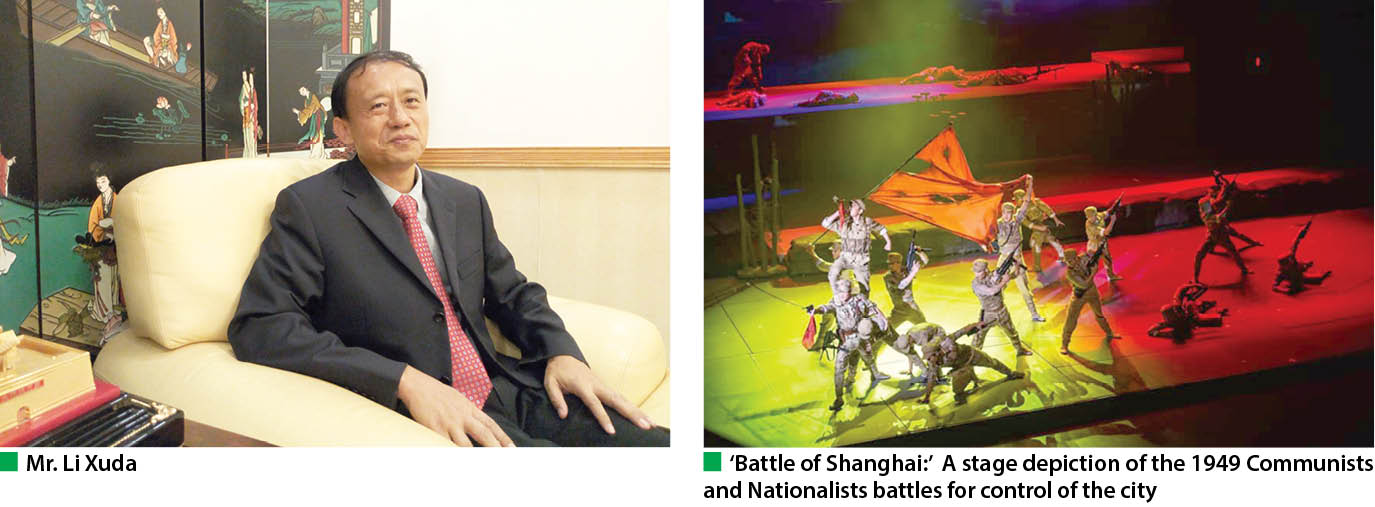China marks 70th Independence with arts
From Beijing to Shanghai and other parts of China, in the months leading up to the country’s 70th anniversary, there have been various visual arts events including exhibitions, calligraphy demonstrations and stage performances, among others. One of the expos which drew crowds, is the New China art exhibition holding at the Long Museum, Shanghai. It […]

From Beijing to Shanghai and other parts of China, in the months leading up to the country’s 70th anniversary, there have been various visual arts events including exhibitions, calligraphy demonstrations and stage performances, among others.
One of the expos which drew crowds, is the New China art exhibition holding at the Long Museum, Shanghai.
It featured about 200 works of art, including oil paintings, ink paintings, prints, sketches, sculptures, political posters and New Year posters, many of which are iconic images that used to appear in textbooks and other publications, according to a Daily China report.
The exhibition tagged, ‘Thinking of the Seven Decades of History at My Space,’ was named after one of the paintings displayed by the renowned artist, Chen Yifei. It ran for about three months, from June till September.
Meanwhile in Beijing, over 500 paintings and sculptures are on display at the National Art Museum of China at the exhibition, ‘Great Journey, Splendid View.’
The exhibition, according to a CGTN report, “shows not only the achievements made in different historical stages since the founding of the People’s Republic of China, but also the innovation of artists who inherited the tradition, and are exploring the realm of art with determination.”
The visual arts elements to China at 70 celebrations, were not limited to Chinese artists alone. Artists from all over the world gave a shot at competing for a place in the art residency program – ‘I love you China through my painting,’ organized by the CIEA· BA Exhibition Company. The program hosts 70 artists who will be sent to 20 cities in China.
Speaking on why the visual arts features prominently in the country’s 70th celebrations, Mr. Li Xuda, Cultural Counsellor of the embassy and also Director of the China Cultural Centre, Abuja, quoted the popular saying, ‘Culture is the soul of a nation.’
He said, with visual arts comprising various forms like drawing, photography, fashion and even architecture, the Chinese government pays a lot of attention to its development.
Xuda explained that, “Shanghai is an international metropolis and financial centre and we can call it a city of culture.
“There are many museums and fine art galleries around, many visual arts exhibitions going on. In November 7 – 9 the Contemporary Art Fair will hold in Shanghai, and will feature all kinds of visual arts. Through this, we want to see the culture progress in China.”
According to him, China can move forward, through cultural development. “This is the reason we pay more attention to the visual arts exhibitions.”
Xuda added that, “Nowadays, I think the visual arts era has come. It gives a pleasant feeling from daily life. Even to improve the country’s image and give a lot of positive feedback for the country.”
Another prominent feature in the anniversary festivities, are the numerous calligraph demonstrations around the country; a traditional art from, Xuda said, the Chinese government took deliberate steps to promote as it did, its other traditions.
He said, “Like Nigeria, China has ancient and rich cultures. Calligraphy is only one of our traditional Chinese culture. During our cultural exchange programs, we have calligraphy demonstrations. From 2017, we started hosting our traditional festival, the Spring Festival, in NIgeria. This features calligraphy demonstrations.
“We invite Nigerians to learn to write Chinese calligraphy. At the same time, we get Nigerian artists to demonstrate their unique culture.”
He emphasized that, “We make tremendous effort to promote our culture, especially traditional culture,” adding that, the Chinese government made policies to encourage the use of technical advancement in the sector because it has advantages in the promotion of visual arts.
Exploiting internet age, Xuda said, “Now we have netizens, which China has a lot of. We use internet as a platform to promote visual arts. We also encourage social investment in visual arts.”
While China has a lot of universities and academic institutions for visual arts, the Central Academy of Fine Arts is the most important of them with enrollment into the institution, expanding annually, “to give more students the opportunity to enroll in the institutions and grow visual arts,” Xuda said.
The fashion industry has benefitted the most in the country’s push to grow visual arts, Xuda informed. From once having only Italian Italian brands and international fashion festivals, to rely on, China now has fashion festivals, annually, across the country.
A photography exhibition on how China developed and its landmark activities, since its founding in 1949 till date, is on display at the embassy. It will be showing at the China Cultural Centre later this month.
